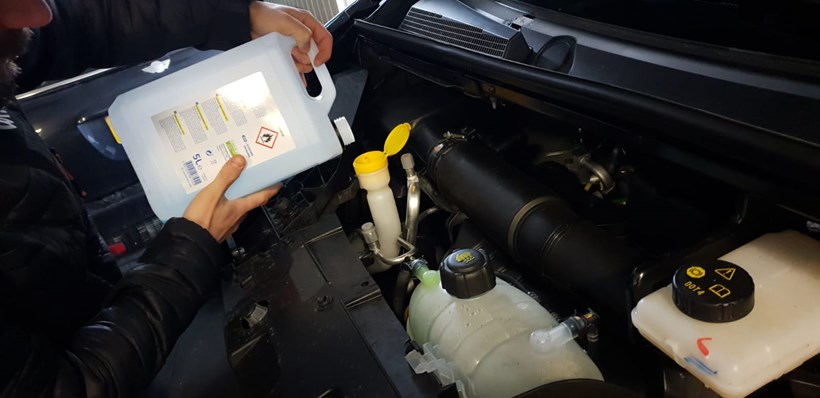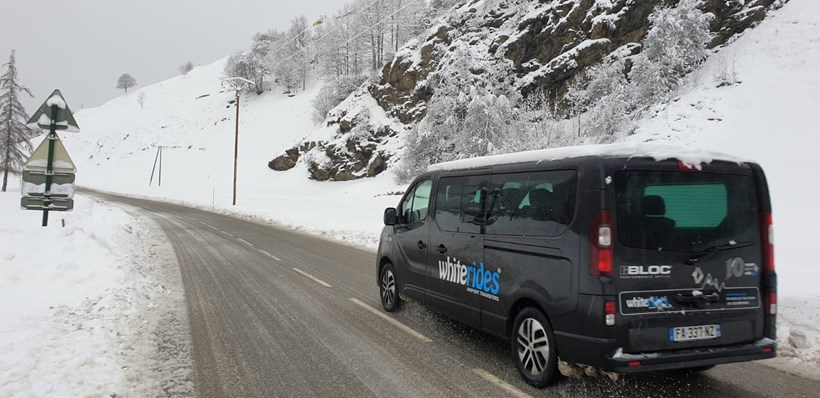Winter can be an unpredictable time on the road, with the typical British winter consisting of lots of rain, with occasional ice, snow and sleet. Winter conditions can sometimes be hazardous, meaning that it is important to take it easy on the road, paying added attention to your vehicle and those around you.
This article gives a rundown of all the ways you can be best prepared for winter on the roads, from winter health and safety kits to winter tyres and snow chains.
How to be prepared
These preparations will not only prevent you from getting stuck on the roads during heavy snowfall but also keep you safe and warm in the event of any unexpected snow too.
Keeping up-to-date on the weather forecast across the country is the best way to stay in the know, preventing you from encountering any unexpected hazardous weather. You can also stay updated when on the road with the radio or your Sat Nav. It is also a good idea to inform someone at your destination of your ETA. Use de-icer and/or a scraper before setting off, but also keep them in your car to use along the way.
The threat of criminals targeting your vehicle still exists in the winter months, make sure you are aware of all the practical tips that will keep your vehicle as safe and secure as possible. In the run-up to Christmas, opportunistic thieves tend to strike so it pays off to be careful.
It is recommended that you keep a winter survival kit in your car throughout the season, keeping you as safe as possible in the event of any snow-ins. This kit consists of:
• A warm jumper or coat
• Winter boots
• Hi-vis vest
• Emergency food
• A torch
• Map
• Snow shovel
• Glove box first aid kit
• Emergency warning triangle
• Phone charger
• Tow rope
• Spare bulb kit
• Jump leads
• Tyre inflator
Tips for on the road
These tips will ensure you take it as easy as possible on the road, driving safely for your sake and for the sake of other drivers. Be prepared for sun glare by making sure your sun visors are in full working order, also keeping screenwash and sunglasses to hand. When driving through fog, make sure to dip your headlights and drive at a steady pace. You should also take a steady pace on icy roads, remembering not to break sharply.

Be vigilant and careful in snowy conditions, looking out for areas of compacted snow. Rain is common over the Christmas period, to ensure maximum safety double the distance that you would normally leave between you and the car in front.
Car maintenance
Make sure your vehicle is in top working condition before heading out into winter conditions by running through this quick checklist.
Check your car battery and alternator
It is normal for your windscreen wipers, heaters and lights to be used more throughout the winter months, which can put more pressure on your alternator and use more battery power. Keep an eye on your alternator and battery to ensure both are in good condition.
Top up antifreeze
Make sure antifreeze is topped up to prevent cracked engine blocks or a burst radiator.
Check bulbs
Prevent hazards to you and other drivers by placing any blown bulbs as soon as possible, and ensuring you carry a spare bulb kit in your winter survival kit.
Check your tyres
During winter, many choose to size up their tyre tread depth to 3mm, or opt for winter tyres for added safety. A snow chain will also ensure that your tyres have enhanced grip on the roads in very snowy or icy weather. Check your tyre pressure is not too high or low, as the optimum tyre pressure will give you the best level of control over your vehicle and the roads.
These preparations and considerations are all quick and easy to make, and a small thing to do in order to keep you, your passengers, and others on the road as safe as possible.
Guest blog by Jessica Kelly
Kelly Media | Freelance Media & Advertising
[email protected]
Jessica Kelly is a freelance writer based in the UK, writing on a range of subjects including lifestyle, small business, and transport. When she’s not writing she can be found curled up with a good book and a cup of tea.
